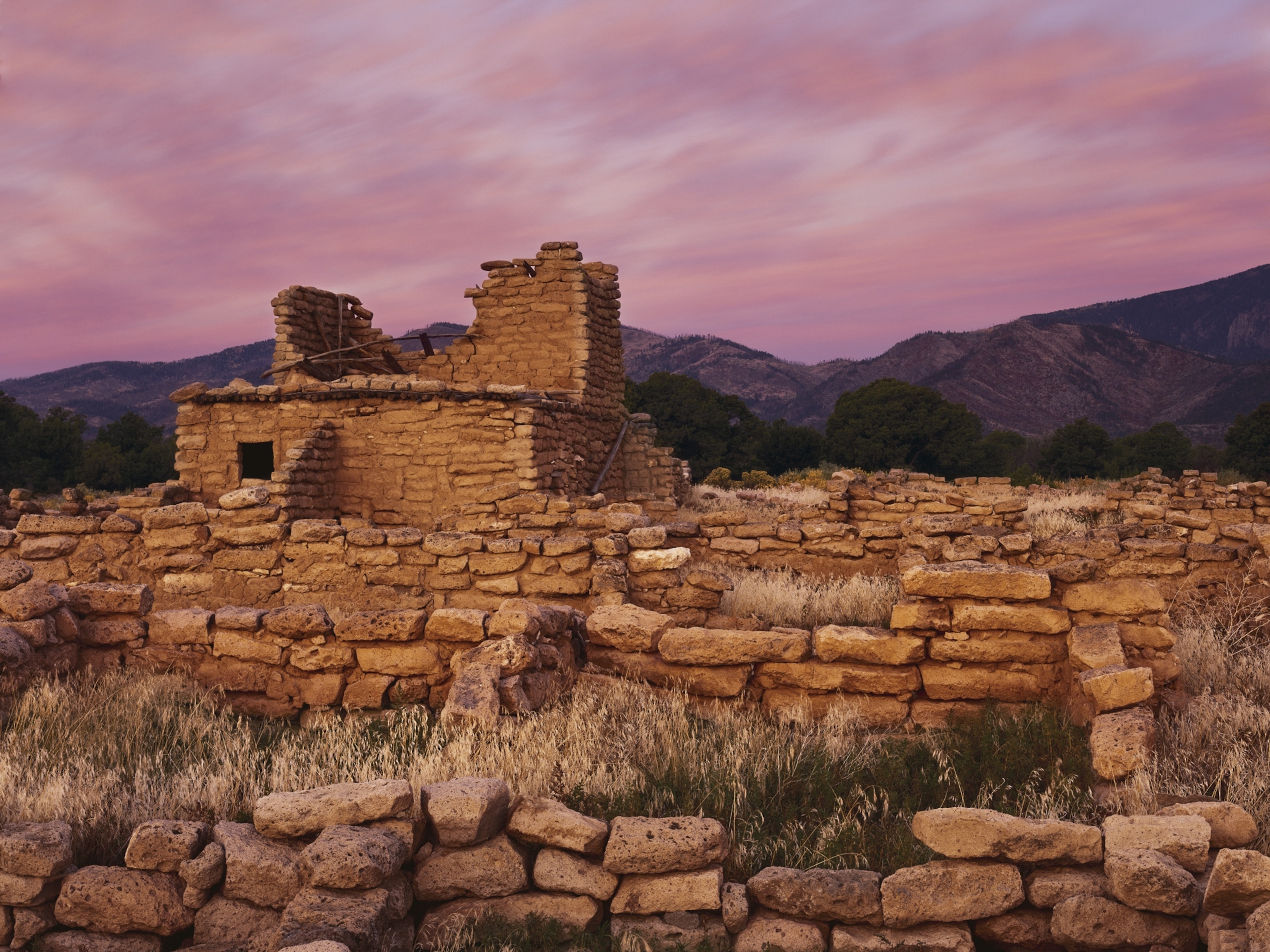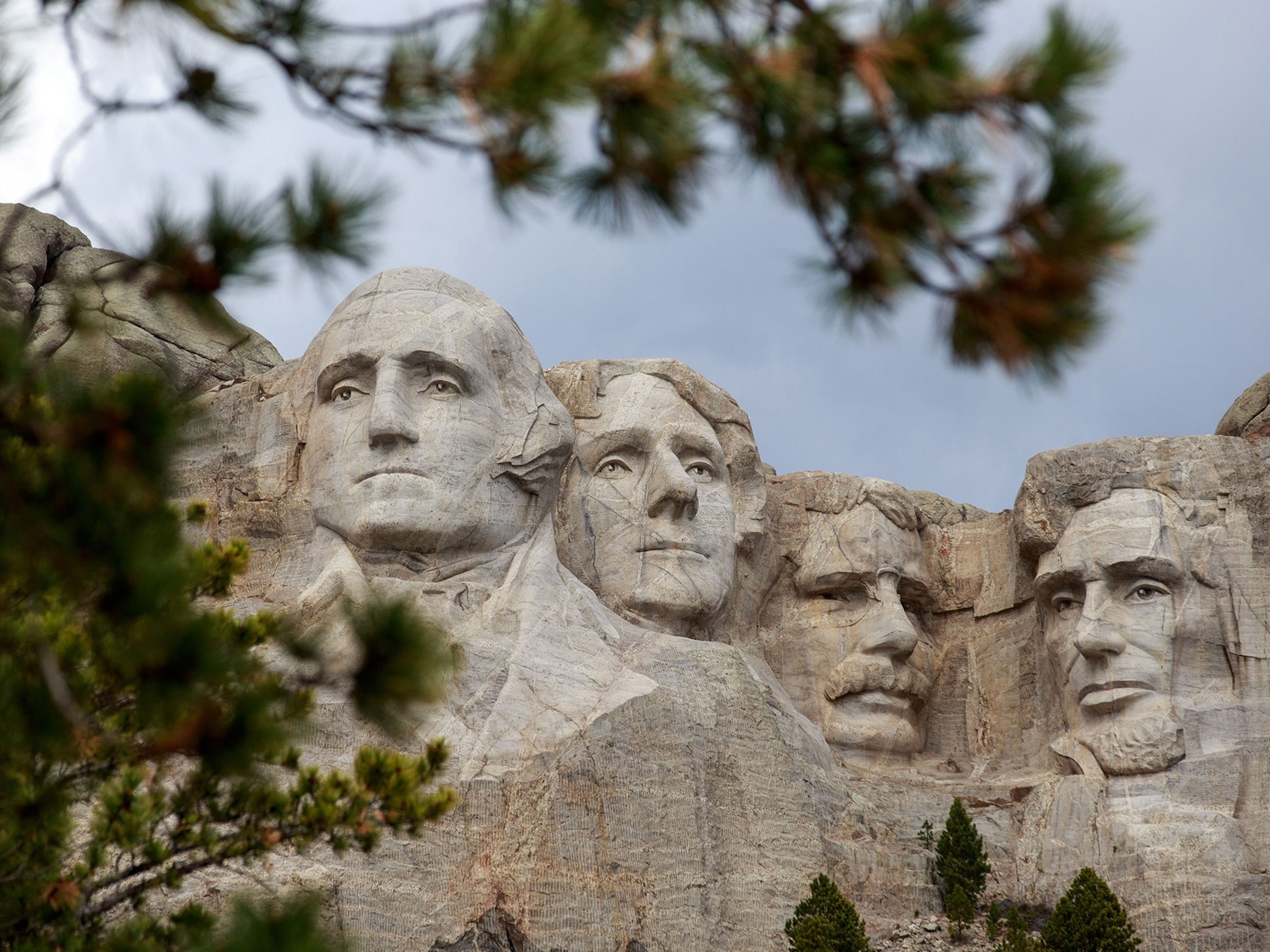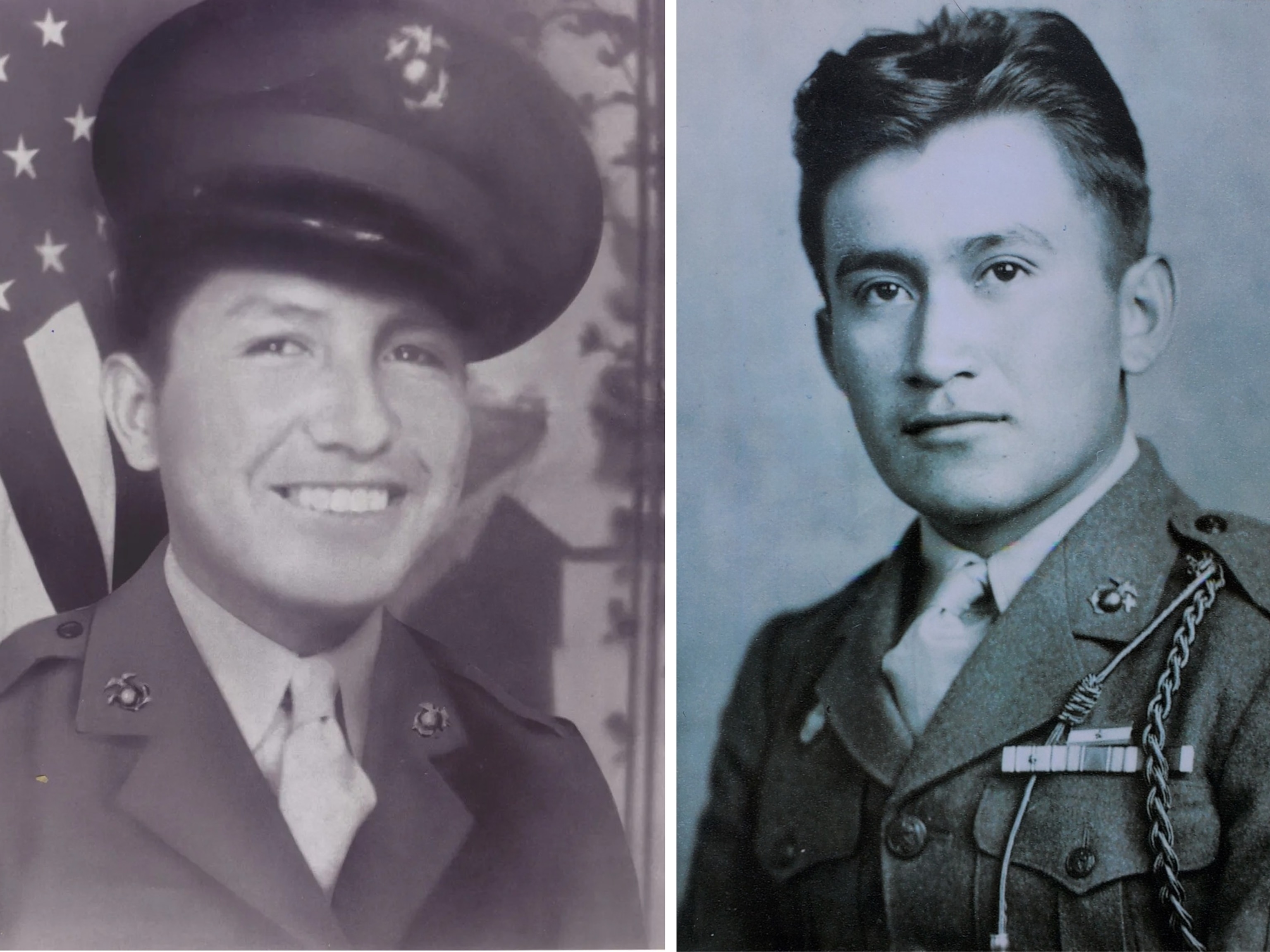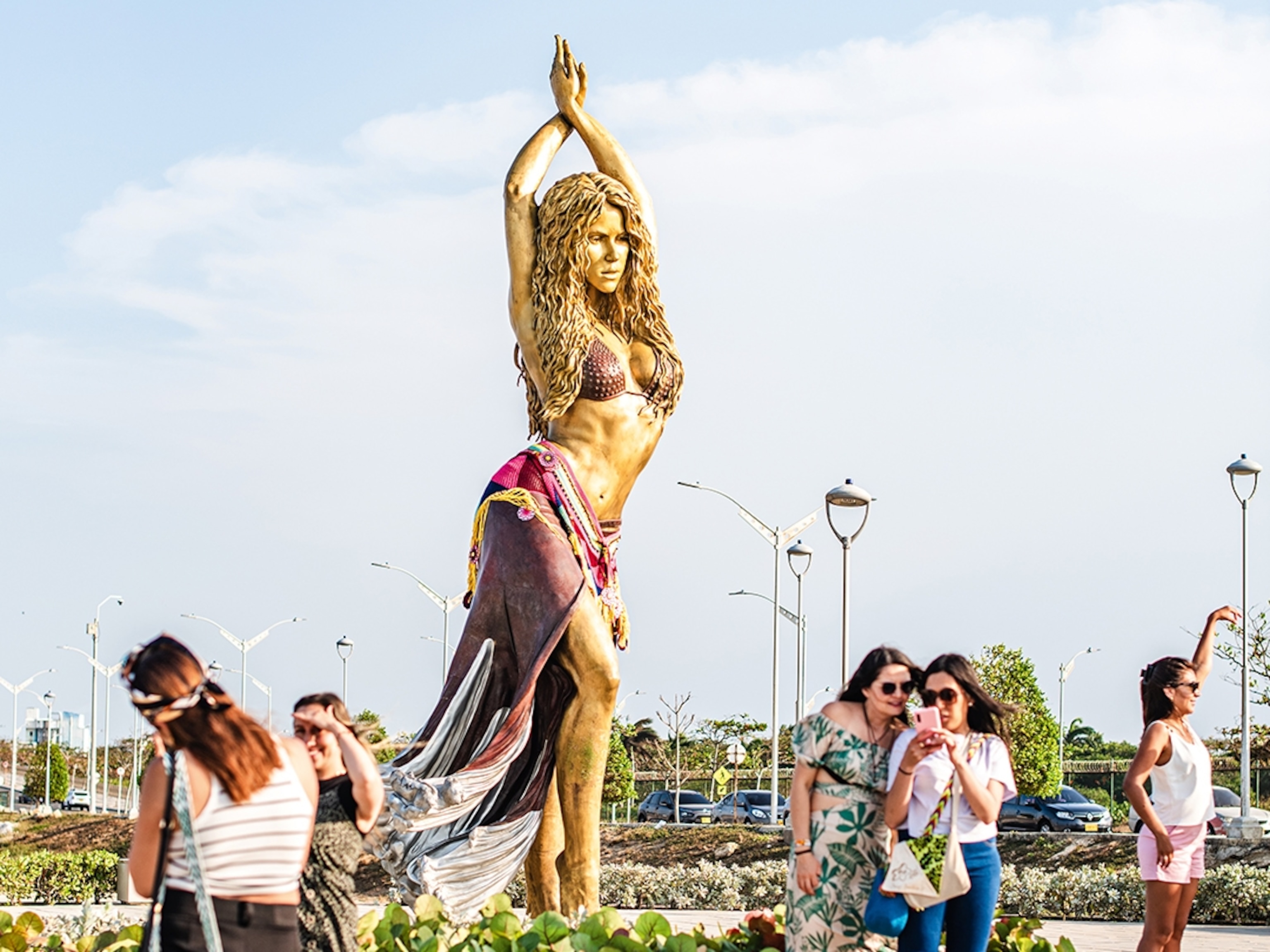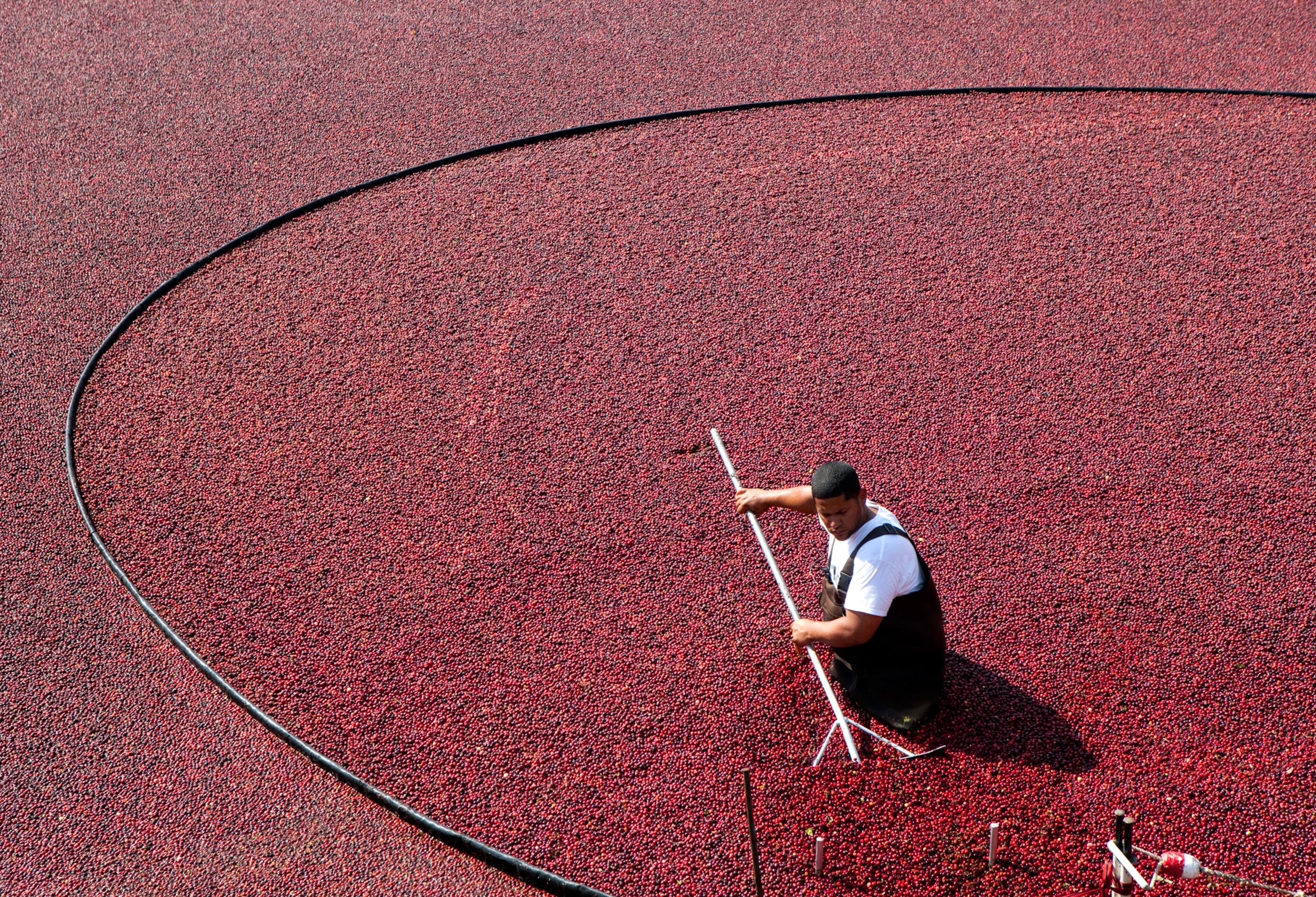
Cranberries, a Thanksgiving Staple, Were a Native American Superfood
The berry helped Indians and colonists survive.
Every schoolchild learns that the Pilgrims couldn't have survived life in the New World without the help of the Indians. The tribes taught them which crops to plant. They introduced them to corn and other nutritional mainstays. One of these, the American cranberry, is still part of the classic Thanksgiving feast. (See more photos of cranberries.)
What you probably don't know, though, is that the cranberry was a key ingredient in the original energy bar, 400 years before anyone knew what a superfood was.
The Algonquin, Chippewa, and Cree, among others, gathered wild cranberries where they could find them in what is now Maine, Massachusetts, New Jersey, and Wisconsin, all the way west to Oregon and Washington, and north to areas of British Columbia and Quebec, according to Devon Mihesuah, a professor at the University of Kansas and an enrolled citizen of the Choctaw Nation. The berry was called sassamenesh (by the Algonquin) and ibimi (by the Wampanoag and Lenni-Lenape), which translates literally as "bitter" or "sour berries." Cranberries were used for everything from cooking to dyes for textiles to medicines.
According to Mihesuah, who also runs the American Indian Health and Diet Project, the Native Americans ate cranberries as fresh fruit, dried the fruit and formed them into cakes to store, and made tea out of the leaves. The Inuktitut of eastern Canada used the cranberry leaves as a tobacco substitute. There were also a range of nonculinary uses for the berry, says Mihesuah. Cree boiled the fruit and used it to dye porcupine quills for clothing and jewelry. Chippewa used cranberries as bait to trap the snowshoe hare.
And harnessing the nutritional power of the fruit—cranberries are extremely high in antioxidants and are thought to help prevent heart disease—Iroquois and Chippewa used cranberries for an assortment of medicinal purposes: as "blood purifiers," as a laxative, and for treating fever, stomach cramps, and a slew of childbirth-related injuries.
Pemmican—the Original Energy Bar
One of the more intriguing ways the Indians prepared cranberries was in a mixture called pemmican—sort of like a modern-day energy bar. They would pound cranberries into a mixture of equal parts ground dried deer meat and fat tallow, then store the mixture in animal skin pouches. "The fat preserves it, as does the acidity in the fruit, which lowers the pH and helps resist bacteria," says food historian Ken Albala, of University of the Pacific. The pemmican would last for months and could be eaten on long journeys as a reliable source of protein and fat.
Pemmican was essential to the Indians and Europeans engaged in the fur trade. For the traders, pemmican was a chief source of calories on the winter trade routes; for the Métis Indians, pemmican was a source of commerce.
"So vital was pemmican to the survival of fur traders and early settlers in Canada," writes food historian and cookbook author Jennifer McLagan, "that its supply sparked unrest between the Native Americans and the Europeans." Responding to a food shortage in 1814, the governor of the Red River colony, Miles Macdonell, attempted to prohibit the export of pemmican by the Métis. The Métis reacted by banding together with fur traders and, in 1816, they attacked the Red River settlement, in a clash known today as the Battle of Seven Oaks.
Cranberries and the Colonists
In all likelihood, the American cranberry was completely new to the European settlers, who came mostly from southern England. "Certainly there are cranberries in Great Britain, so the colonists may have had a frame of reference for it," says Stephen Cole, author of The Cranberry: Hard Work and Holiday Sauce. "The cranberry that became the cultivated cranberry that's harvested and eaten today is distinctive to North America, though."
The colonists had a few names for the cranberry: Craneberries, for the way the flower, produced in early June before the fruit grows, resembles the head and bill of a sandhill crane; fenberries, for the fens—an antiquated word for bogs—where cranberries grow; and bearberries, for the bears that were, apparently, often seen snacking on them.
But the colonists were indifferent to the Indians' wide range of uses for the cranberry. In fact, they were mostly adapting the fruit to fit the recipes and uses they knew from the Old World. "They were using cranberries in a medieval culinary tradition," says Cole. "Colonists never ate anything like pemmican within the tradition they had, which was mostly stuffings and puddings." Food historian Albala agrees: "The Europeans used cranberries the way they would have used similar fruits ... as a sour fruit sauce with wild fowl."
Sweetening the Deal
In 1622, the British brought honeybees to North America, changing the ways the colonists could use the fruit. "Once there was a consistent form of sweetening," says Cole, "the cranberry takes off. It gets used as a slightly tart side dish and ends up in pies and tarts." Soon, it's featured on the tables of high society. William Tudor, a satirist and well-known figure among Boston society in the early 19th century, wrote mockingly of cranberry sauce that it "is eaten with almost every species of roasted meat, particularly the white meats, turkies, &c. Some even eat it with boiled fish, and I knew one person, otherwise a very worthy man, who eats it with lobsters, for supper!"
By the mid-19th century, when the European settlers began formally cultivating the cranberry for commercial use, the Indians were gone. "Tribes were pretty well wiped out within a hundred years of contact in New England," says Mihesuah. "They had a heck of time just surviving, and if they did manage to cultivate cranberries to any extent, it did not last long."
The cranberry industry that began over 250 years ago has thrived, and today is worth over $300 million. (Watch "Cranberry Harvest" at Wisconsin's oldest cranberry marsh.)
There are independently owned cranberry farms across the northern United States and southern Canada—and some Indian tribes have kept their connection to the berry. An organic cranberry farm in Oregon, Coquille Cranberries, is owned and operated by members of the Coquille tribe. And each year, on the second Tuesday in October, the Wampanoag celebrate Cranberry Day on Martha's Vineyard.
Unlike cranberries, though, pemmican has yet to make its way back into the culinary mainstream. There is some contemporary interest in this early American staple, mainly from those following the trendy Paleo diet (one blogger called pemmican "the Paleo version of a candy bar—creamy and almost naughty") and among extreme athletes and long-distance hikers looking for a higher ratio of fat to protein. But for most Americans, chances are that a deer meat and cranberry candy mash won't be making an appearance on the Thanksgiving table anytime soon.




